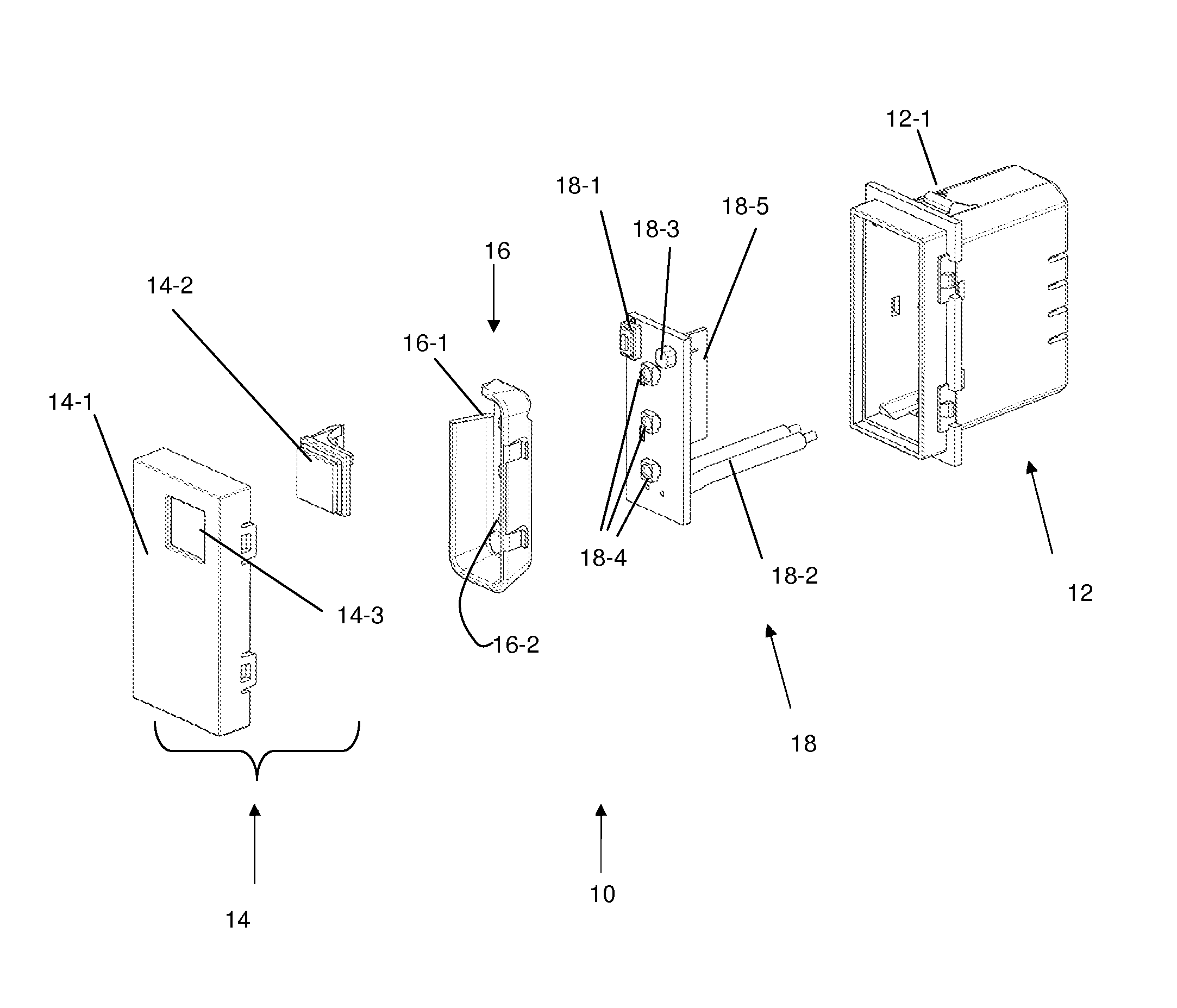Night light
a technology of electric wiring and night lights, applied in the direction of electric lighting, fixed installation, lighting and heating equipment, etc., can solve the problems of inconvenient installation, inconvenient use, and inability to provide light switches, etc., to achieve energy saving, maximum illumination effect, and sacrificing sensor isolation
- Summary
- Abstract
- Description
- Claims
- Application Information
AI Technical Summary
Benefits of technology
Problems solved by technology
Method used
Image
Examples
Embodiment Construction
[0027]Reference will now be made in detail to the present exemplary embodiments of the invention, examples of which are illustrated in the accompanying drawings. Wherever possible, the same reference numbers will be used throughout the drawings to refer to the same or like parts. An exemplary embodiment of the switch of the present invention is shown in FIG. 4, and is designated generally throughout by reference numeral 100.
[0028]As embodied herein, and depicted in FIGS. 1A-1B, perspective views of a frame member 10 in accordance with the present invention are disclosed. FIG. 1A is directed to the rear side 10-2 of the frame member 10, whereas FIG. 1B is directed to the front side 10-1 of the frame member 10. The frame member 10 is configured to “complete the electrical enclosure” when one or more modular electrical devices (30, 40 or 50) and / or modular alignment connectors 20 are properly installed within the frame opening 10-13 such that the device wall box interior is substantial...
PUM
 Login to View More
Login to View More Abstract
Description
Claims
Application Information
 Login to View More
Login to View More - R&D
- Intellectual Property
- Life Sciences
- Materials
- Tech Scout
- Unparalleled Data Quality
- Higher Quality Content
- 60% Fewer Hallucinations
Browse by: Latest US Patents, China's latest patents, Technical Efficacy Thesaurus, Application Domain, Technology Topic, Popular Technical Reports.
© 2025 PatSnap. All rights reserved.Legal|Privacy policy|Modern Slavery Act Transparency Statement|Sitemap|About US| Contact US: help@patsnap.com



